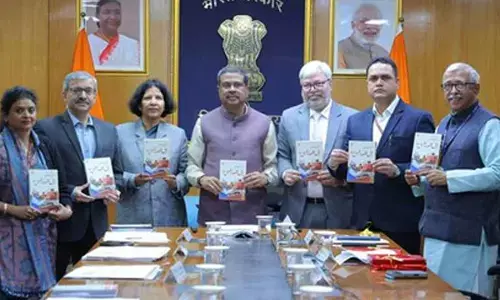Antibiotics: Friend or Foe?

Antibiotics: Friend or Foe?
Dr Srinivas Jakkinaboina from critical care medicine of SLG hospitals, Hyderabad speaks about antibiotics
Antibiotics are considered to be one of the greatest discoveries of the 20th century, as they save millions of lives from deadly diseases. Antibiotics avoid hospitalisations and impact positive outcomes for sick, admitted-infected patients. However, antibiotics must be given early and appropriate for the best patient outcomes. Inappropriate, unnecessary or overuse of antibiotics increases drug resistance (antimicrobial resistance- AMR).
Antibiotics are like a double-edged sword; it acts as a friend when appropriately used and as an enemy if inappropriate.
In India, we can quickly get antibiotics over the counter without a prescription and doctors prescribe without appropriate knowledge.
Key factors that drive the use of antibiotics without a prescription. a) Patient level – most common causes of influenza, common cold, sore throat, cough, fever and headache were viral. Still, most patients use antibiotics without a prescription due to a lack of knowledge. b) Healthcare professional (HCP) level - Patient requests for an antibiotic are a driving factor for both pharmacists and doctors. In India, training and cooperation of pharmacists and doctors on antibiotic use is limited and could be strengthened.
Antimicrobial resistance (AMR) is an increasing worldwide public health problem. The World health organisation (WHO) currently considers it one of the three greatest threats to human health for the next decades.
Newly emerging infectious diseases are increasingly threatening people’s health as AMR makes it more difficult to treat bacterial infections effectively. If antibiotics become ineffective, these infections will lead to an increased burden on healthcare and, eventually, deaths. The economic consequences include loss of productivity and increased diagnostics and treatment costs. Estimates suggest that, globally, AMR currently leads to the deaths of 700000 people per year. This is more than the number of people that currently die from cancer.
The WHO global action plan on AMR sets out five strategic objectives: a) Improve awareness and understanding of AMR, b) strengthen knowledge through surveillance and research, c) reduce the incidence of infection, d) optimize the use of antimicrobial agents in human and animal health e) ensure sustainable investment in countering AMR.
The awareness of AMR to be increased in public at every level ie company, individual, human resources, NGO, health workers and government organisations. The primary health centres, hospitals, clinics and medical shops should actively participate in educating the public. Initially, the health care workers have to be trained regarding the AMR.
The health department should have a policy of monitoring the use of antibiotics in the public and hospitals. In addition, we should have adequate laboratory capacity to identify pathogens and their antimicrobial susceptibility to guide optimal use of antimicrobial medicines in patients.
Accredited health professionals should carry out the distribution, prescription, and dispensing of antibiotics under statutory body supervision or suitably trained persons authorised in accordance with legislation. The available drugs in the market should have quality assured, safe and efficacious.
The provision of stewardship programmes that monitor and promote optimisation of antimicrobial use at community, hospital, state and national levels in accordance with international standards can decrease the AMR. However, all the above-mentioned have to be implemented strictly by the government policies to avoid more deaths in India as we are dealing with complicated surgeries and high-risk patients.
(Ph: +914023785678, 7799235678
Toll Free: 18005992020,
E-mail: [email protected])














